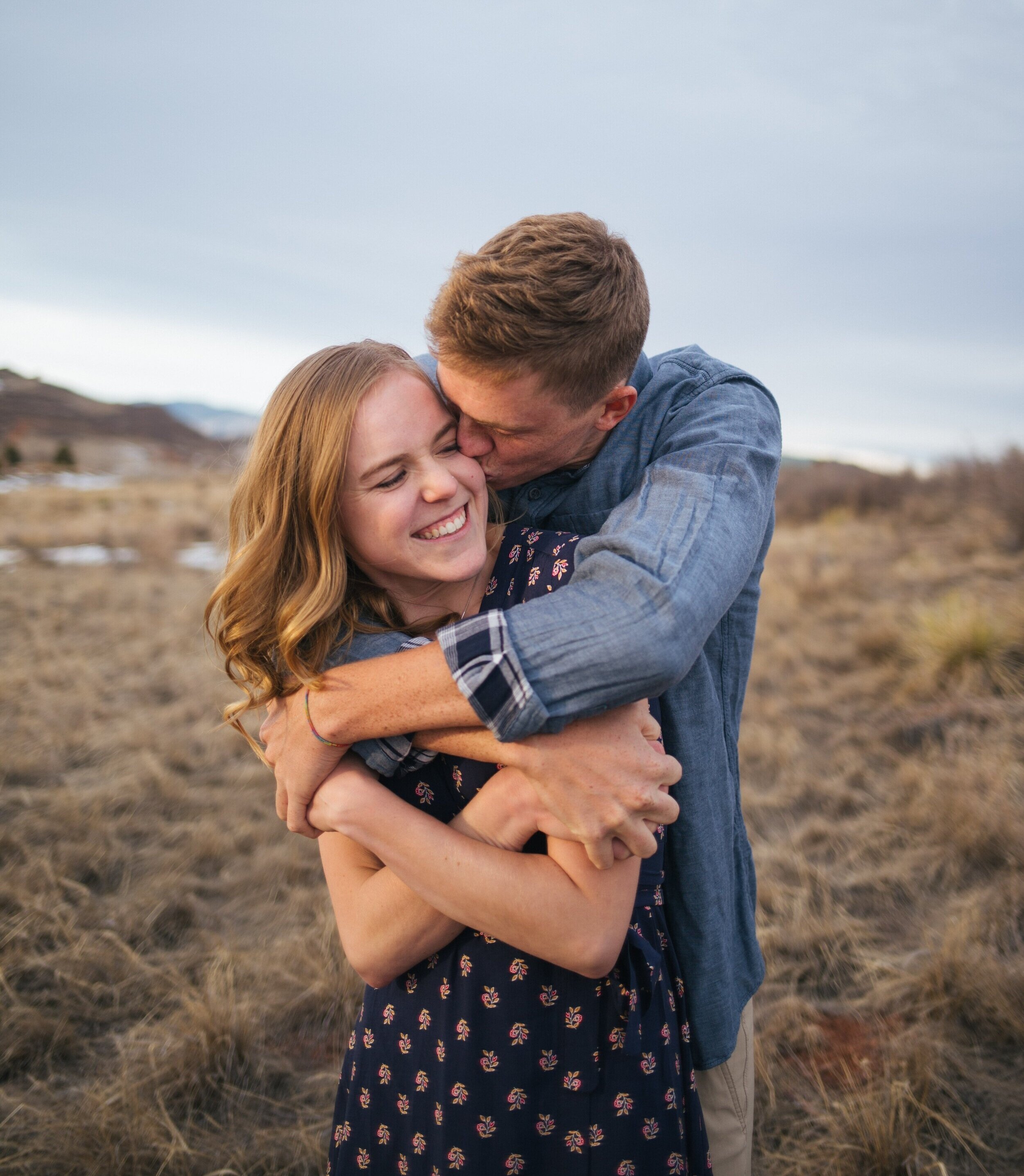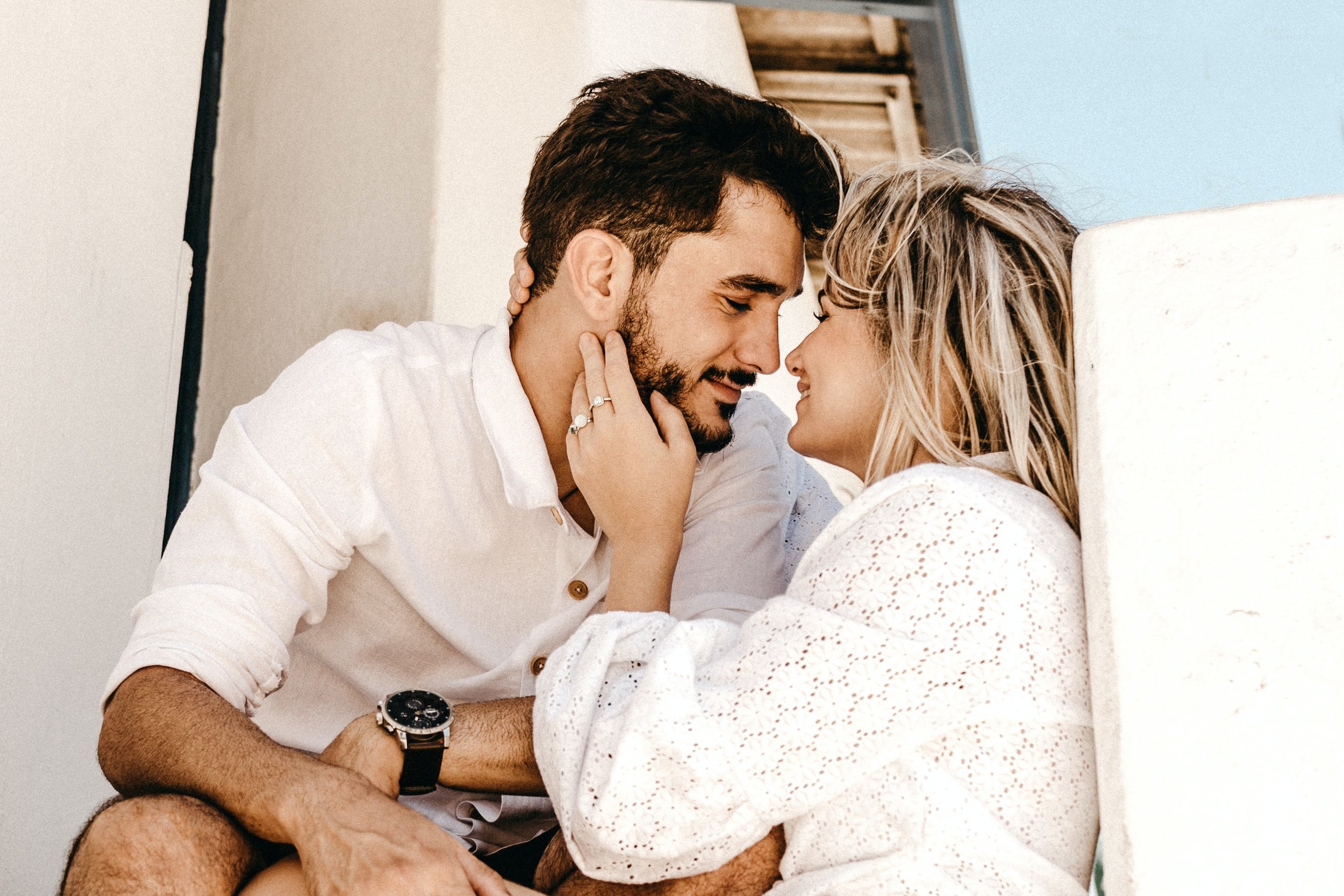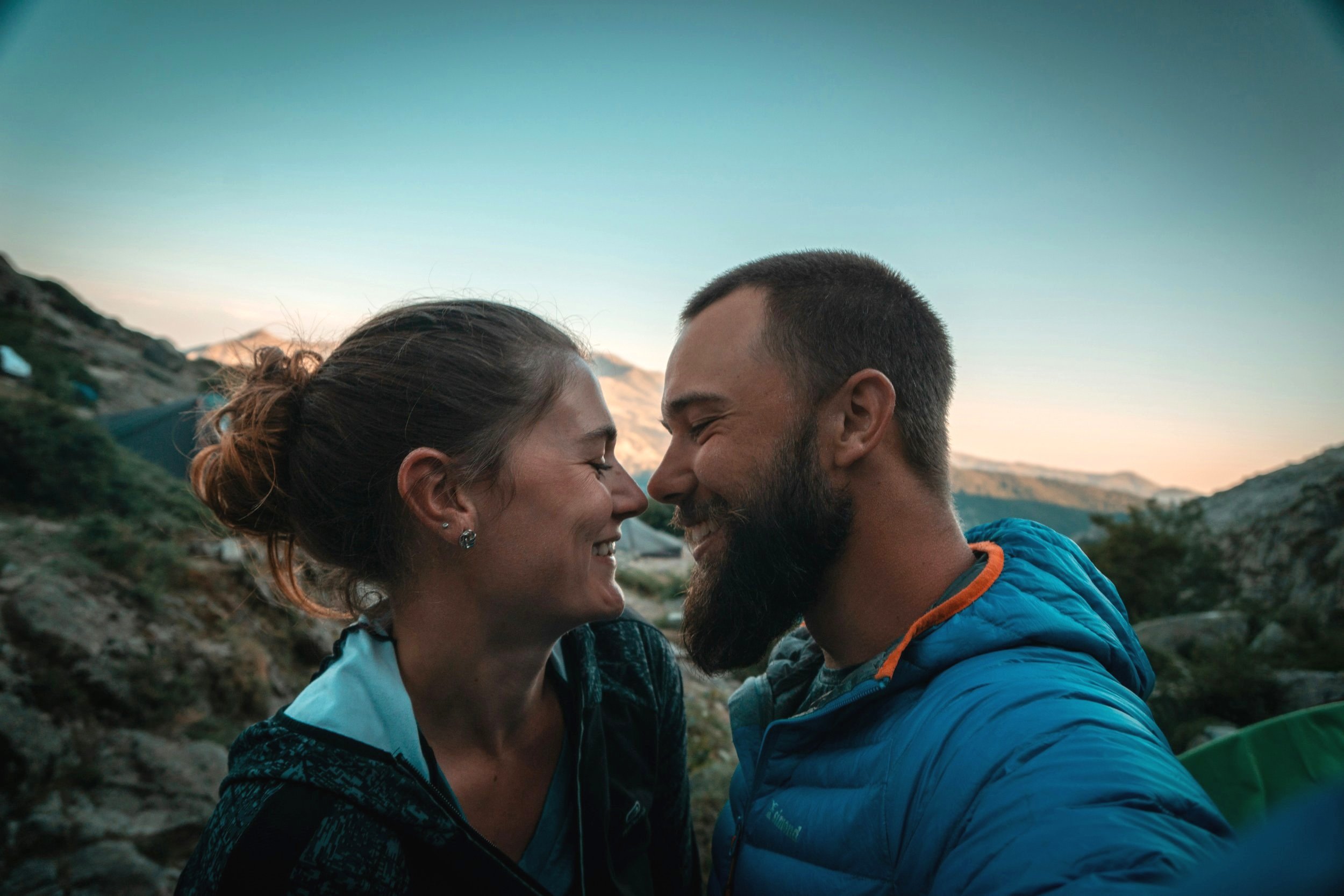Read the First Chapter From 'Needy No More'

Anxious attachment was my nemesis for many years—long before I ever had a name to describe the phenomenon.
I recall countless sleepless nights spent questioning my worth, reading between the lines of every text sent by a potential romantic partner. I’m reminded of the resentment I felt at sacrificing my own needs and placing someone else on a pedestal that loomed above me. I remember the lakes of tears that would form once my fears of abandonment became actualized.
But then everything changed.
After a devastating breakup with someone who had an avoidant attachment style, my therapist nudged me in the direction of exploring attachment theory as a framework for better understanding myself and my relational history. She encouraged me to read the book Attached. What I read transformed me forever.
In the months and years that followed, I learned everything I could about regulating my nervous system, communicating effectively, and setting boundaries. I devoured any and all information I could find that would help me heal and grow more secure. I fervently sought to sharpen the skills I wasn’t taught by my parents, that were largely absent from my previous relationships.
And then I applied it in my life. Imperfectly. Messily. But consistently nonetheless.
Slowly then suddenly, I wasn’t as focused on what people around me were doing or not doing. I wasn’t derailed when I’d get triggered by perceived emotional absence like a lag in response time or a lack of future plans. My life wasn’t consumed by rejection, abandonment, and dysregulation.
The benefits permeated every aspect of my life. I was better able to focus at work. My friendships deepened, as did the relationships I have with my family. But above all else, I felt more at home with myself than I ever had.
Now I’m helping people all over the world to do the same—to heal their anxious attachment style and grow more secure. Firstly through my coaching program. Then with my Anxious Attachment Style Healing Toolkit. And now with my newest book, Needy No More: The Journey From Anxious to Secure Attachment.
Needy No More is packed with 300+ pages of:
Practical advice from a seasoned attachment expert. I’ve spent thousands of hours working with clients on five continents to help them heal and grow more secure. My expertise will guide you to heal your core wounds and finally break the cycle of anxious attachment. Once and for all.
Empowering personal stories and insightful anecdotes. I dive deep into my own traumas and how I was able to move forward in my healing. I also share powerful and inspiring experiences from the lives of the clients with whom I’ve worked. Reading Needy No More will motivate you to keep going when you most want to give up.
Comprehensive exercises, activities, and practices. Your copy of Needy No More comes with nearly 10 in-depth exercises pulled directly from my coaching program for anxious attachers, so you can do the work you need to heal the underlying causes of your anxious attachment.
Tangible tools and techniques to assist your healing. From a daily practice to help you regulate your nervous system to a foolproof way to challenge your limiting beliefs and intrusive thoughts, Needy No More arms you with the fundamentals required to make the rubber meet the road on your healing journey.
Needy No More will help you:
Understand the origins of your attachment style
Decipher between different types of trauma
Identify the roles you play in your relationships
Grasp how the nervous system works, as well as how to regulate yours
Heal your abandonment wounds
Forgive, let go, and move forward
Embrace your inner child
Clarify your emotional needs and core values
Learn how to set firm boundaries and make reasonable requests
Become a more effective communicator
De-escalate conflict before it begins
Stay sane while dating with an anxious attachment style
Select a romantic partner with whom you can build a healthy partnership
Improve your romantic relationship if you’re already in one
Build emotional maturity and sharpen your relationship skills
Whether you’re just discovering that you have an anxious attachment style or are several years into your journey to grow more secure, Needy No More is the healing companion you’ve been looking for.
I hope you’ll give it a chance to be just that.
Below, I’ve excerpted the first chapter from the book. Read on to learn how discovering my anxious attachment style changed my life. And how discovering yours can be the stepping stone to changing yours.
For good.
The Discovery: The First Chapter From Needy No More: The Journey From Anxious to Secure Attachment
Throughout my life, I’ve felt like I was simultaneously too much and not good enough, like there was something about me that was inherently different or fundamentally flawed—as if God made a mistake on the assembly line when it was my turn to be created.
That’s what I get for experiencing several traumatic, life-altering events before I came of age.
It wasn’t until my mid twenties that I realized something was majorly off. I was living in New York City and seriously dating for the first time in my life, and I was severely struggling. Whether through dating apps or out and about in the city, I met many men and went on many dates. But, for one reason or another, nothing came to fruition.
“I have over a thousand Tinder matches and still no boyfriend,” I said to coworkers through strained, self-deprecating laughs in the light of day. But my dark nights alone at home were no laughing matter. While I was successful professionally, I felt like a failure personally. I didn’t understand why the men I was most interested in seemed to take the least amount of interest in me. Much of my mental and emotional energy was spent trying to manage these gaps in my identity and existence. How could I be so eloquent professionally yet so hesitant to communicate personally? How could I feel like I was giving so much yet receiving so little in return? How could I feel so calm on my own but then so chaotic when a love interest was introduced into the equation? How could I feel like I had it together in every other facet of my life but somehow seem to stumble with finding a romantic partner—the very thing I craved most deeply? Embarrassed and confused, my ego took hold. No one knows how to handle you, it told me. Not even you.
I felt consumed by shame, haunted by low self-worth, and riddled with self-doubt. I ridiculed, judged, and criticized myself constantly. I second-guessed myself at every turn. I cringed at the thought of being needy.
While I didn’t know what was wrong, I knew something was definitely not right.
What could it be that’s making me feel so crazy, so broken, so alone? I pondered regularly through puddles of agonizing tears.
For years I tried and failed to put a name to this phenomenon, blaming everything I could think of that would lead to such a deep sense of shame. Maybe it has something to do with my dysfunctional family dynamic, I thought. Maybe it’s because I’m a boy who likes other boys, I wondered. Maybe I’m just not the relationship type, I surrendered. In the end, these were well-intentioned but incomplete assessments.
Several years later, I finally found the answer.
“Have you heard of attachment styles?” My therapist asked me at the end of our first session.
“I remember reading something about that in one of my psychology courses,” I said. “Why do you ask?”
“Well, it seems to me like you might have an anxious attachment style,” she said. “I think you should brush up on attachment theory—and also consider reading Attached.”
I immediately followed her advice.
What I discovered changed me forever. I read Attached cover to cover in 24 hours, devouring the material in front of me. I dog-eared pages, highlighted phrases, and underlined entire paragraphs.
I’d never felt more seen in my entire life.
Suddenly, I understood how my past traumas and current struggles with relationships were connected. It finally made sense how the instability I experienced growing up was connected to the instability I was experiencing as an adult. There it was, laid out before me in black text on white paper—the pattern of dating emotionally unavailable men, the crippling self-doubt and sense of shame, the desperate attempts to show my affection so I wouldn’t be abandoned.
Of course I’d feel this way considering what I’ve been through, I thought. Tears of a different kind flowed this time. Tears of relief. Tears of understanding. Tears of validation.
Identifying my attachment style was nothing short of a watershed moment for me—a seismic shift that instantly split my life into before and after this groundbreaking discovery. It’s difficult to describe the kind of clarity I experienced when I realized that everything I’ve ever questioned about myself has an explanation, that every moment of doubt or worry or fear is rooted in specific origins and makes sense when I contextualized my experiences, that feeling anxious in relationships with others doesn’t mean I’m needy or broken, that I learned this way of relating to others and can unlearn it too.
At that moment, I made a pact with myself that I’d never stop talking about attachment theory. For the rest of my life, I vowed to tirelessly spread the powerful message of self-awareness packed into this fundamental framework so others could share in this same eye-opening experience—so they wouldn’t waste precious time, make countless mistakes, or repeat painful patterns like I had. My biggest hope was that they wouldn’t feel crazy, needy, or alone like I did for so long.
In the years since, I’ve kept that promise, even as I’ve continued working to grow more secure and advance on my own healing journey. I made a plan to switch careers and pursue this purpose full-time, eventually taking the essential leap of faith to become an anxious attachment style coach and self-help author. I published my first book, It’s Good to See Me Again, detailing my own traumas and how I was able to move forward in forgiveness and self-love. I posted dozens of inspirational and informative blogs on my website, crackliffe.com, that reached over 300,000 people in more than 100 countries. I recorded hundreds of videos on TikTok, building a community that’s now 150,000 people strong—and garnering millions of views, likes, and comments, too. And I’ve worked with thousands of others in one-on-one and group formats in my coaching practice, helping people on five continents to improve their relationships with themselves and others.
To say that attachment theory changed my life would be an understatement, since I’ve now impacted the lives of so many more as a result. That’s the power of healing, isn’t it? It has ripple effects. For me and for the people whose lives I’ve been able to touch in the process.
These days, I no longer look at myself as broken or defective. I know better than to call myself needy or characterize myself as clingy. I understand that in order for my relationships to be healthy and secure, I need to open up and communicate—in other words, to make them that way. I know better than to repress my emotions and dissociate from my body. I don’t expect anyone to read my mind. I refrain from being indirect or passive aggressive—from engaging in protest behavior. I express myself with clarity and compassion. I ask for what I want and need. And I allocate my energy to those who are committed to doing the same in return. Attachment theory gave me these gifts. And it can do the same for you, too.
The promise of this book is to help you to unlock the existing worthiness within, to bring the focus and energy back to yourself, to take everyone else off the pedestal and assume your rightful place on the throne of your life, to end the traumas and cycles that have plagued you, to learn the lessons that you weren’t taught and sharpen the skills that weren’t modeled for you. There’s a power we rediscover when we do this. There’s a comfort we can access, a peace lingering just below the surface that’s yours and only yours to claim. This is the journey from being powerless to being powerful, from being needy to being human, from being a victim to having experienced victimization, from being hyper-focused on the external to finding harmony with self and others.
For an anxious attacher, this is completely counter to almost everything we’ve ever known. It’s much easier to beat ourselves up, struggle in silence, and think that our sensitivity is a curse. The sad part is, without realizing it, what we’re doing is treating ourselves in exactly the same abusive, dismissive, hurtful, neglectful, and insensitive ways that were so often modeled for us by the folks who were supposed to take care of our hearts but instead hurt them in ways big and small.
No wonder our wounds feel so fresh.
Please hear me clearly when I say that life doesn’t have to be this way. There is a way out and a path forward. It involves slowing down, turning inwards, and softening up. It entails going into the depths of our darkest moments and shining the light of awareness on them in the hopes of integrating our pain. It means finally letting go of all of our survival patterns and coping mechanisms and harmful conditioning. It’s a process of unbecoming who we thought we were in order to become who we’re meant to be.
And it all starts with taking my hand.
In the coming pages, I’ll guide you through what I’ve learned about the anxious attachment style—from how and why it forms to everything I know about healing and growing more secure. We’ll discuss trauma and its impact on the body. We’ll dive deep into what it means to have a dysregulated nervous system, as well as how to better regulate it. We’ll explore how to find, build, and expand a healthy and safe romantic partnership. We’ll review boundary setting, intimacy building, and effective communication techniques so you can become more skilled and adept in ways that weren’t modeled for you growing up or with previous partners.
I’ve divided these topics into two parts. The first one—the one you’re in now—is called The Wounding, and will explore how and why the anxious attachment style develops. I’ll share stories from my own personal life as well as anecdotes from my work as a coach and healer in order to help you understand why so many of us approach relationships from an anxious state of mind and body. In the second part, titled The Work, we’ll unpack what it means for you to heal, laying out a step by step process as a guide on your journey to growing more secure and emotionally mature. I’ll share journaling prompts for you to complete, exercises for your self-reflection, and practical tools for helping you advance in your healing—all in the spirit of breaking your patterns. Once and for all.
“Why am I this way?” is the question answered by the first part. “What can I do about it?” is the one answered by the second.
As I mentioned above with Attached, I look at reading self-help books as an active process, one filled with underlining favorite quotes, turning down the corners of pages to mark important sections, and writing notes in the margins to add thoughts to key passages. I highly encourage you to do the same. Mark your territory. Interact with what most resonates with you. Highlight, underline, and doodle away. And when you get to the second part of the book, be prepared with a laptop, phone, notebook, or all the above, so you can answer the prompts provided and actually do the work.
Whether you’re single and actively dating, in a relationship or marriage, on the brink of breaking up or divorcing, or focusing on your healing journey while you take a break from your romantic life, this book will assist you in finding your way forward to healthier and happier relationships, because it will first and foremost help you improve the one you have with yourself. It’s my sincerest wish and deepest desire that this book will be the guide you’ve been searching for to lead you step by step, the very guide I wish I would’ve had on my own healing journey.
My childhood was messy, volatile, and unpredictable. Naturally, I learned that everyone leaves, that love never lasts, that loss is inevitable. If feeling needy is the result of feeling abandoned, then I most certainly felt like the neediest person in the world. Many times, I perpetuated this feeling by abandoning myself—by subverting, numbing, denying, invalidating, and downplaying my own needs and my own reality out of a fear of losing someone else. To me, this was the most painful form of abandonment of all. Because these things were my responsibility. Because they were well within my control. Because I’d given up on myself.
By picking up this book, you’re defying your own proclivities for self-preservation, shedding your own inclinations for self-sabotage. You’re declaring something profound; something that, at some point on our healing journey, each one of us who’s been brave enough to venture inwards has declared. You’re not just saying, “I’ve had enough,” you’re saying, “I am enough.” You’re not just saying, “I deserve better,” you’re saying, “I’ll be better.” You’re not just saying, “I’m not needy,” you’re saying, “I never was in the first place.” That’s the spirit I want you to embody as we step forward together, in unison. You’re not “clingy” or “smothering,” “too much” or not “good enough.” And you never were. That’s the ethos of this book. That’s what healing is all about. That’s what it means to be able to say you’re needy no more.
To preview even more content from Needy No More, check out these posts:




